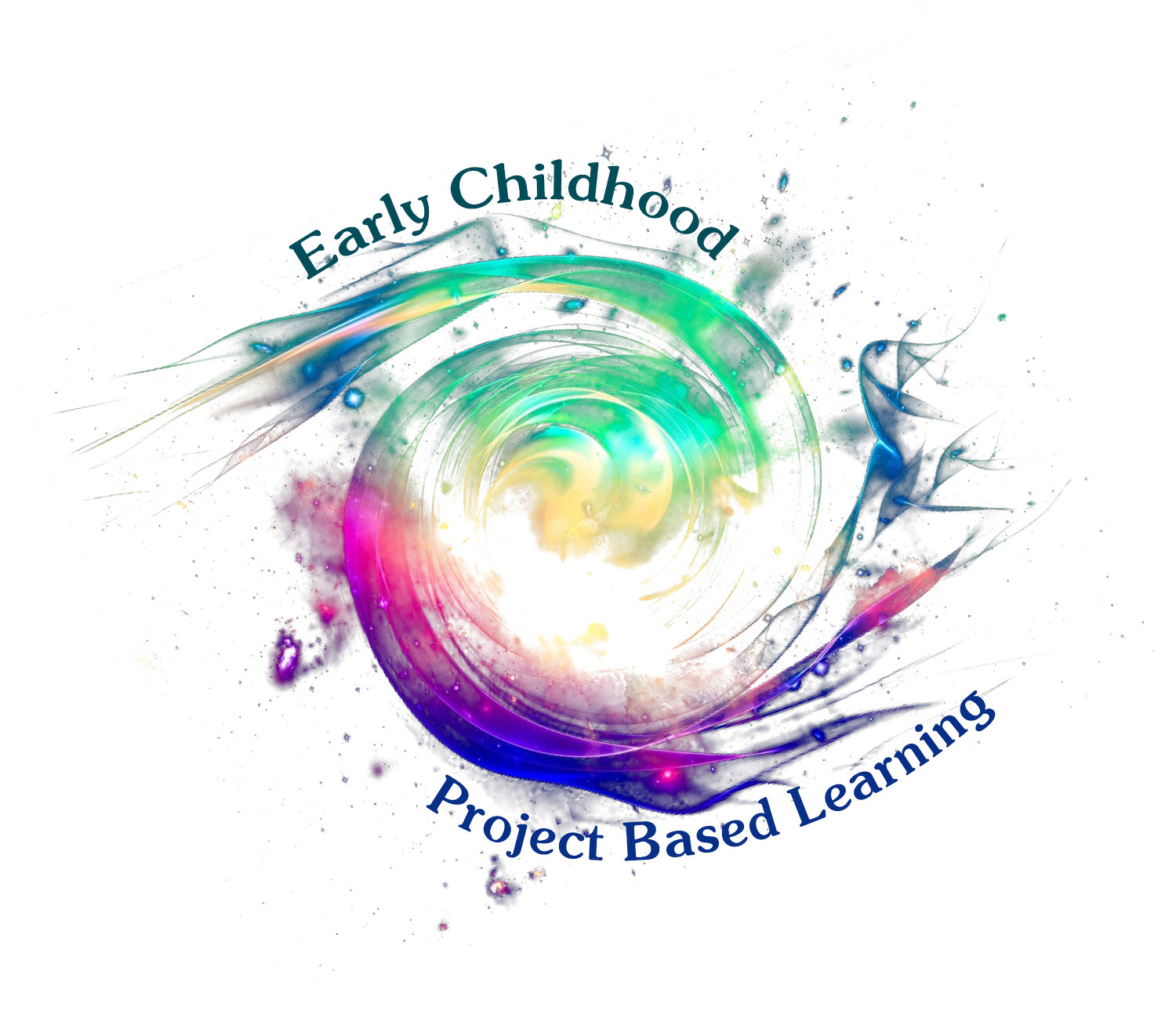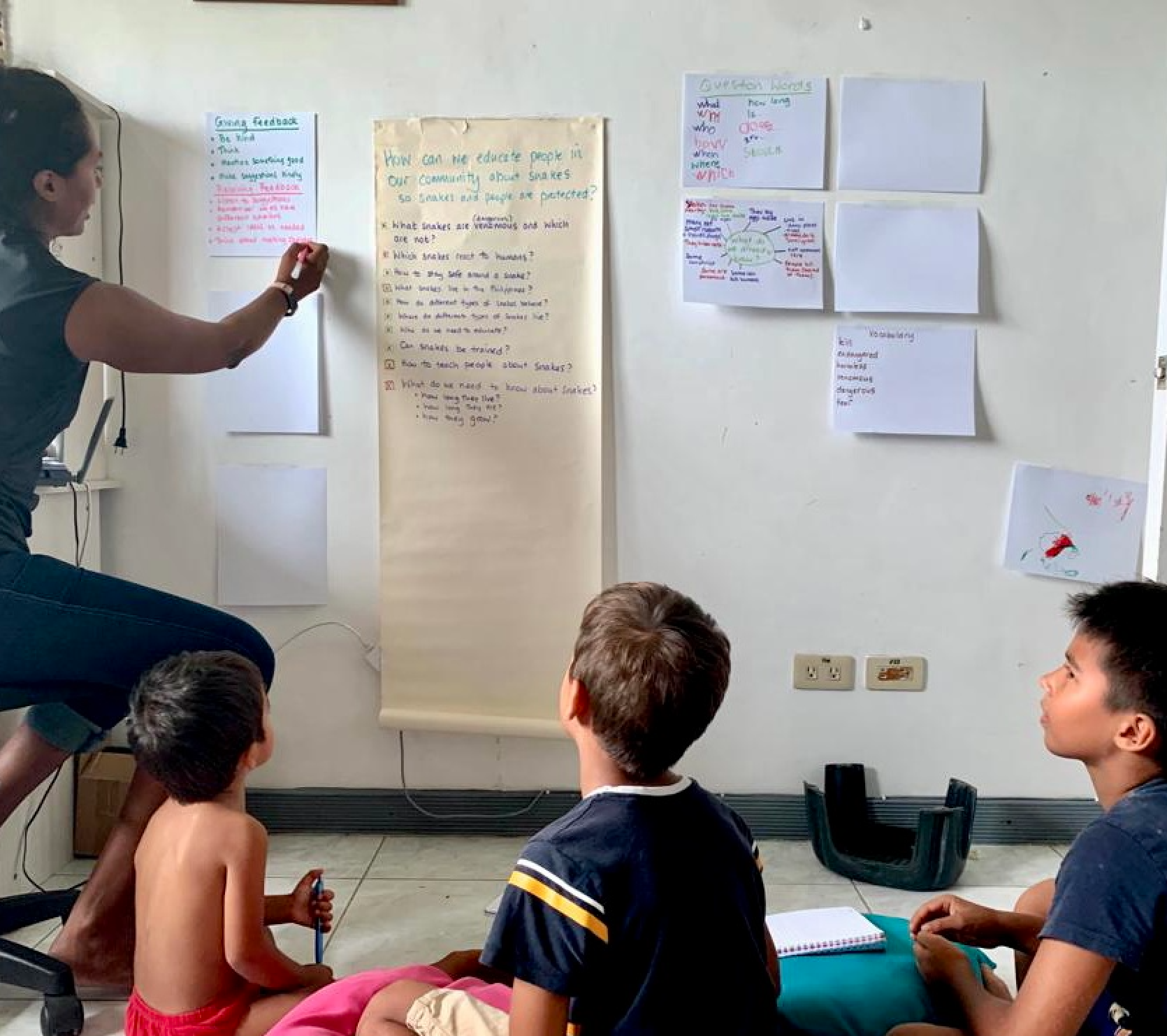Post-its and Pythons: PBL in a Class of Three
Our Setting
We are a British family living in the Philippines where my husband works for an NGO. I have been homeschooling my boys, aged 9, 7 and 3, for three years now. I am a relaxed homeschooler and generally aim towards the British National Curriculum. Typically, we spend around one and a half to two hours of formal work per day.
Why PBL?
I came across Project Based Learning in an article and it immediately piqued my interest as I loved the project idea and that it gives school work a context and purpose. I did some research around PBL, but it wasn’t until after reading Implementing Project Based Learning In Early Childhood that I felt I really had a grasp of what it looks like practically and could visualize how to make it work in a multi-age homeschool setting.
When planning the projects for the year, I sat with my UK National Curriculum (standards) booklet and went through the requirements for both year groups 2 and 5 (grade levels) deciding which requirements I could integrate and turn into projects that cover both levels and multiple subjects and skills. It was important for me to make the work meaningful, enjoyable both for my children and myself, serve our community where possible and to include SEL. With these principles, I planned out projects that covered multiple subjects for the year using the PBLWorks Project Planner for each. The planner helped me structure our daily project time and the early childhood PBL book helped me plan what those ‘classes’ would look like.
Our First Project
Our first project was based around my 7-year-old’s interest in snakes and reptiles and a real problem we had found in our community. As we walked in our neighborhood we found a harmless snake that had been killed intentionally. This is something we had come across quite a few times before. In the Philippines, as in many other places, most people fear snakes and the usual reaction to seeing one is to kill it. We discussed this and it was then that I posed the driving question (that I had already planned out) “How can we educate people in our community so snakes and people are protected?”
What do our homeschool PBL lessons look like?
I put together a blank space for our project wall in our office/ homeschool area and the three boys sat around it. I posed the driving question and bit by bit they came up with some “need to know questions” while I wrote them on a chart on the wall. I noticed my older son rose to the competition; he liked to have one more question or idea than his brother, and it was good to see the motivation in both boys working together to come up with ideas.
Our days continued like this, taking time to work through answering our questions and undertaking research from various sources. I applied some techniques mentioned in the book and PBL best practices including:
writing answers/questions in different colours on the project board which helped each of them see their own contribution and subsequently encouraged them to contribute
learning about drafts, review and feedback to help them improve on their work
including SEL topics such as empathy and fears when discussing why people kill snakes, as I see SEL as an essential part of their learning and incorporating it in ‘normal’ work gives it equal weight to other subjects.
waiting for the boys to suggest something before introducing it (eg. food chains and life cycles) because it helps them see that their ideas and thoughts are truly contributing to the project which is motivating for them, while covering the points I want included.
directly introducing relevant learning goals because sometimes children won’t come up with them by themselves and I see them as important to include.
organising field work which gives them an authentic experience and first hand research
arranging an interview with an expert enabling children to learn from someone and get questions answered
teaching beyond the standard to challenge them, but also because they are multiple ages; the younger ones are going to be learning much the same as my older son and I use the standards as a guide rather than something that limits us.
using technology - they used Canva for their final product, which is an essential skill and it’s fun!
A key moment in the project was organizing a snake encounter, our field work, to understand what it is like to handle a harmless snake. This was a highlight for the boys and helped propel the project along, giving them some firsthand knowledge and experience to reflect on.
I also arranged a video call with a Philippines Snake expert, for which the boys came up with questions. It was good to see them working on conversation skills and learning from this type of research.
There have been many things about PBL that I have discovered and appreciated, but perhaps one of the main things is the increased interaction we have as a family. We are not learning passively; we are speaking and listening and generally communicating a lot more which has made our school time much more enjoyable and has improved our relationship. I enjoy the interactions with my children - seeing them work together, applying their knowledge and practicing essential verbal skills.
Literacy Work
I integrated literacy throughout this project instead of having separate lessons. I tried to make the writing tasks natural parts of the project, such as writing about their experiences, summarizing their research, writing real emails or messages and developing their final product. To make literacy work suitable for the different levels, I simply set them the same task but had different expectations for what they had to do. For example, we covered diary writing following the snake encounter. First I asked them how we would write a diary using prompts as needed, for the task my 7-year-old just had to write three sentences and my 9-year-old had to include the features of diary writing we had discussed. My 3-year-old answered questions orally and practiced the letter S. We were able to cover aspects of writing, grammar, spelling and comprehension in this way. I also drew upon additional resources (i.e. Twinkl) to ensure I knew to cover the right content and skills.
For my own reference, I had access to literacy materials to support me in this.
The final product was an infographic and a quiz that we could share online with our community and local friends. I found it a little challenging not to over-assist them in creating this. I had to hold myself back from giving too much direction. In the end we worked on review and feedback until it got to a good standard.
Measuring Progress
I had planned to measure skills, knowledge and learning through different parts of the project. Some of their writing tasks like the diary entry, research summaries and infographic would demonstrate writing skills. Their ability to create and complete a quiz would demonstrate their knowledge of snakes and I decided to use a quiz based on their curriculum to measure knowledge around lifecycles, food chains and life processes. In the future I would review whether a quiz was actually necessary and instead incorporate measuring this learning within the project.
A beautiful moment for me was when the boys were talking to our local friend about snakes and effectively teaching her. It showed they had knowledge of their subject and the confidence to talk to an adult about it. They were definitely proud when we shared their infographic and quiz on Facebook and printed it out for the local guards and gardeners.
My Learning Points
I am a teacher. PBL is different to ‘normal’ homeschooling in that you need to plan and implement like a teacher as there is no packaged curriculum to follow. You need to see yourself as a teacher or facilitator. However, this is also easier as you are not directly teaching but facilitating the learning process. For me, it was actually a more enjoyable way to ‘teach’ rather than following a packaged curriculum because it was more interactive and also I was facilitating what I had planned myself. Having strong ownership of the project was really motivating for me.
Don’t be over ambitious. Accept that the children will produce work at their level so the final product must truly reflect that. In a home education setting there are just a few children which makes their public work feel a lot more visible and judged than perhaps when they are in a classroom, so I found there is a temptation to assist too much.
Post-it notes are amazing. Kids love writing on Post-it notes!
Plan more for the younger ones. I was able to include my 3-year-old in some areas, and other times my plans were more about distracting him. With a little more planning I could include him and enable him to work at his level on particular parts of the project.
Kaylene Williams-Pignon lives in the Philippines where she is home-educating her three boys. She is from the UK where in her previous life before children, she worked as a Business Continuity Specialist in London. Kaylene loves the outdoors and exploring, spending time with friends, as well as having a quiet night in watching TV.




